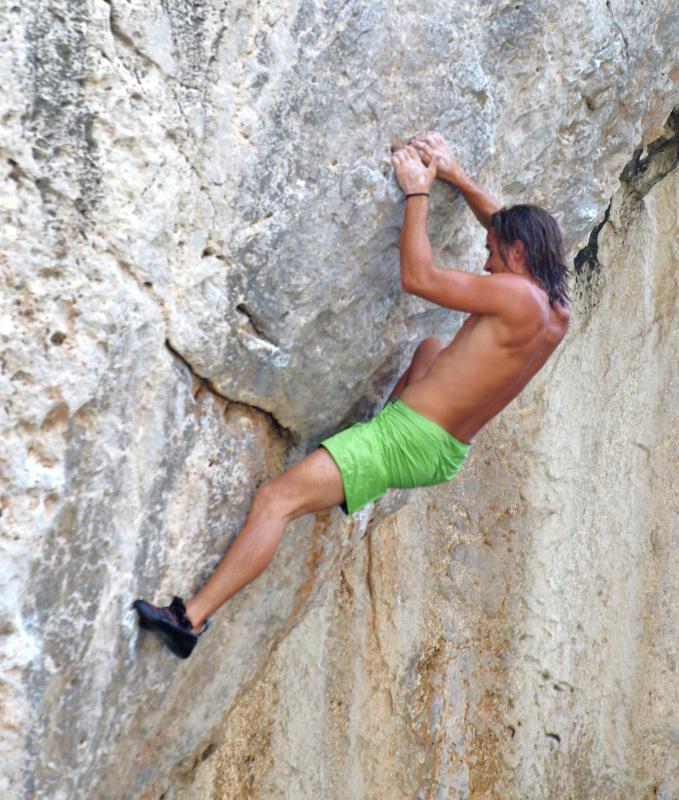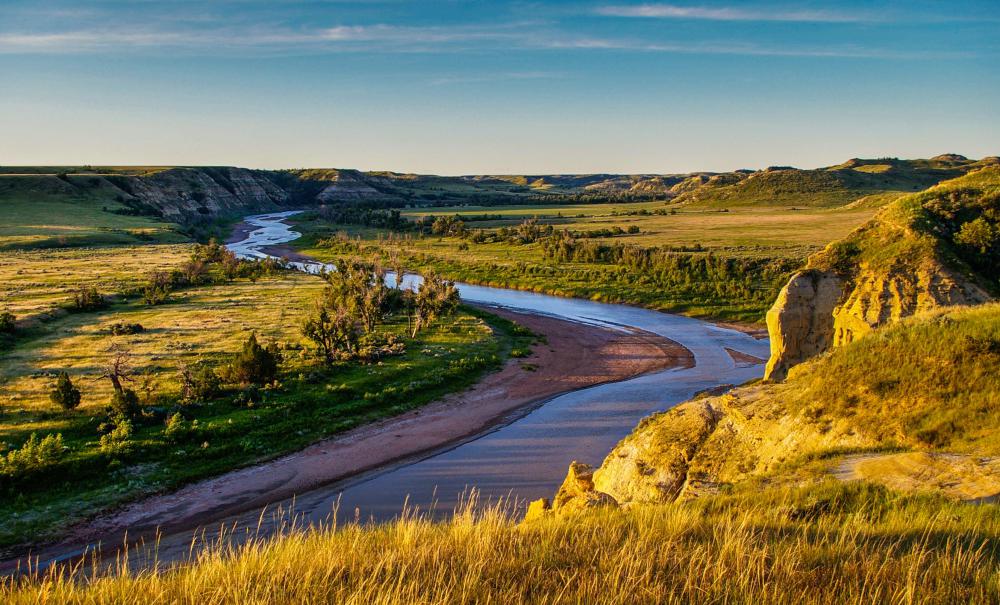At AllThingsNature, we're committed to delivering accurate, trustworthy information. Our expert-authored content is rigorously fact-checked and sourced from credible authorities. Discover how we uphold the highest standards in providing you with reliable knowledge.
What are Badlands?
Badlands are lands which are unusable due to their aridity and barrenness. Some of the most famous badlands can be found in North America, most notably at Badlands National Park in South Dakota. Badlands can also be found in New Zealand at the Putangirua Pinnacles and in Spain at Bardenas Reales, among many other places in the world. Many people find badlands interesting to visit, because they are visually quite unique.
When badlands form naturally, it is usually the result of centuries of erosion which wears away rock formations and topsoil. Badlands tend to be characterized by extreme and very fanciful rock formations, and the rock is often deeply striated, with layers of geologic history being clearly visible. Badlands tend to be a great area for fossil hunting as well, since fossils will be visibly exposed in the eroded landscape.

Small trees and shrubs may be able to survive in the badlands, along with succulents and other hardy plants, but the landscape tends to be rather barren. Film companies often utilize badlands for eerier Martian and lunar landscapes, since they look entirely alien. This type of land also tends to be very difficult to travel across, forcing people to move slowly, and it may be subjected to radical temperature extremes, with high heat in the day and icy temperatures at night.

It is also possible for human activities to result in the formation of badlands. Extensive mining, for example, can erode and damage the landscape, with pollutants destroying available water supplies and contributing to the formation of barren badlands. Overutilization for agriculture can also lead to the development of badlands. Some badlands created by the activities of early civilizations have been turned into World Heritage Sites, as a recognition of their cultural value.
People who want to do some hiking in the badlands should come prepared. Sturdy shoes with good ankle support are critical, as the terrain is tough to cover. It is also a good idea to dress in layers, to be prepared for temperature changes, and to carry plenty of water and snacks to stay hydrated and energized. Since the formations in badlands can also be highly deceptive, carrying a compass or GPS tracker is very strongly advised, as is sticking to mapped trails or using the services of a guide. Traveling in the badlands can yield some amazing visual vistas, along with excellent rock climbing and bouldering opportunities.
Frequently Asked Questions
What exactly are badlands, and how do they form?
Badlands are a type of rugged landscape characterized by steep slopes, minimal vegetation, and significant erosion. They form in areas with soft sedimentary rocks and clay-rich soils that are extensively eroded by wind and water. This erosion is often accelerated by extreme temperatures and scant rainfall, creating the distinctive, often colorful, layered appearance.
Where in the world can you find badlands?
Badlands can be found on every continent except Antarctica. Notable examples include the Badlands National Park in South Dakota, USA, the Bardenas Reales in Spain, and the Dinosaur Provincial Park in Alberta, Canada. These landscapes are typically associated with arid and semi-arid regions where erosion outpaces vegetation growth.
Why are they called 'badlands'?
The term 'badlands' originates from the Lakota people, who called it "mako sica," translating to "land bad." It was later adopted by French trappers as "les mauvaises terres à traverser," meaning "bad lands to travel through." The name reflects the difficulty in traversing these areas due to the harsh terrain and lack of water sources.
What kind of wildlife can survive in badlands?
Despite the harsh conditions, some wildlife thrives in badlands. Species are often adapted to arid environments, such as prairie dogs, rattlesnakes, and bighorn sheep. Birds, including hawks and eagles, also inhabit these areas, utilizing the high vantage points for hunting. The limited vegetation supports hardy plant species like sagebrush and cacti.
Are badlands of any ecological or scientific importance?
Badlands are ecologically significant as they house unique ecosystems with specially adapted flora and fauna. Scientifically, they are important for studying erosion processes and Earth's geological history. Fossil beds in badlands, like those in the Badlands National Park, have provided invaluable insights into prehistoric life, revealing fossils dating back millions of years.
Can badlands be used for any economic activities?
While badlands are not typically conducive to agriculture due to poor soil quality, they can be valuable for other economic activities. Some badlands contain fossil fuels, minerals, and other natural resources. Additionally, their dramatic landscapes attract tourists, providing opportunities for eco-tourism and recreational activities such as hiking, photography, and scientific research.
AS FEATURED ON:
AS FEATURED ON:












Discussion Comments
Theodore Roosevelt National Park in North Dakota.
@momothree: In Nebraska, Toadstool Geologic Park has some of the greatest examples of badlands rock formations. It is part of the Oglala National Grassland and close to the small town of Crawford.
There is also Badlands National Park in South Dakota. It preserves almost one quarter of a million acres of buttes, spires, and rocky landscape. There is also mixed grass prairie. It is also quite entertaining to see the bighorn sheep, mule deer, buffalo, and coyotes.
Where are some of the badlands in North America?
Post your comments